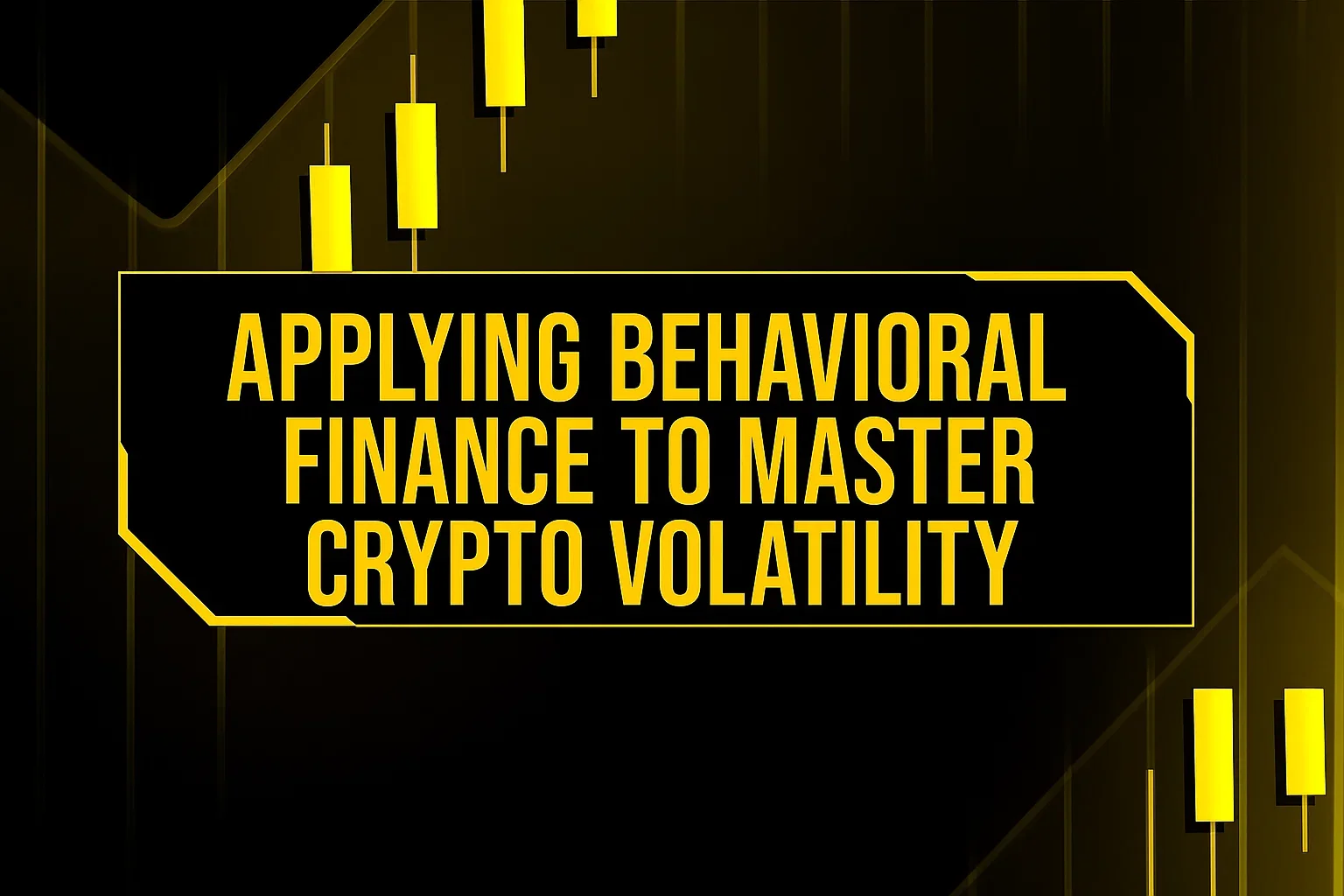Table of Contents
In the high-stakes world of cryptocurrency trading, proficiency in charting and technicals is only half the battle. Honestly, sometimes it feels like just 10% of the game. The market’s legendary volatility – you know, the 30% swings in a week – is driven not just by code and fundamentals, which everyone obsesses over, but by a powerful, often irrational force: human psychology.
The principles of behavioral finance, which study how psychological biases impact investment decisions, are arguably more relevant in the crypto space than in any other market. Think about it: a market that’s open 24/7, moves at warp speed, and is basically built on speculative narratives is the perfect breeding ground for panic and euphoria. Understanding these inherent biases is a critical step toward developing the discipline and emotional detachment required for long-term success. It’s about conquering the enemy within.
The Cognitive Traps of a Hype-Driven Market
The crypto market is a perfect laboratory for observing cognitive biases in action. You see this everywhere. The Fear of Missing Out (FOMO) is a primary driver of speculative bubbles, causing market participants to pile into an asset at its peak for fear of being left behind. Remember that time your buddy bought Dogecoin just because everyone was talking about it? Classic FOMO. Conversely, Fear, Uncertainty, and Doubt (FUD) can trigger panic-selling during downturns, leading investors to sell their positions at the absolute worst possible time, locking in losses they didn’t have to take. They sell low, then miss the inevitable rebound. It’s just brutal.
Another powerful bias, which ties directly into the first two, is herding behavior, where individuals follow the actions of a larger group, often ignoring their own analysis or, more often, ignoring the fact they haven’t done any analysis at all. This is amplified by social media echo chambers on platforms like X and Reddit, where a prevailing narrative – good or bad – can create powerful price momentum that is completely detached from an asset’s fundamental value. Recognizing these forces at play is the first step toward avoiding becoming cannon fodder for the market.
The Big Three: Loss Aversion, Overconfidence, and the Echo Chamber
Let’s dig deeper into the biases that really get retail traders in trouble.
- Loss Aversion: This is a monster. Prospect Theory, pioneered by Daniel Kahneman and Amos Tversky, showed that the pain of a loss is felt roughly twice as intensely as the pleasure of an equivalent gain. In crypto, this manifests as holding onto a losing position far too long. You know the drill: “I’ll just wait for it to get back to my entry price.” It’s an irrational refusal to accept the reality of the loss. It keeps you trapped, stops you from deploying capital elsewhere, and turns a small loss into a disaster.
- Overconfidence Bias: Studies show that a huge number of investors rate their trading skills as “above average,” which is statistically impossible. And, seriously, younger traders are often the most confident, diving in and trading way too frequently without proper risk assessment. You start thinking you can time the volatile crypto market perfectly, which is a one-way ticket to getting absolutely wrecked. This bias is what makes people skip setting a stop-loss because they just know the price is going to reverse. Wrong!
- Confirmation Bias: This one is subtle, but it will kill your edge. After you buy a coin, you’ll naturally start seeking out only the news, posts, and analysts who confirm your investment thesis. You’ll hang out in the Telegram channels dedicated to that coin. You become blind to contradictory information, like regulatory concerns or project delays, because you only want to validate your decision. This selective listening creates the deepest, most dangerous echo chambers.
And there’s more, like the Gambler’s Fallacy. That’s where you think, because Bitcoin has dropped for six straight days, it has to bounce back on the seventh. The brain sees patterns where there are none, giving you false confidence in a market that is essentially random in the short term. The high volatility just tricks our brains into seeing these illusory patterns, which is why a lot of this stuff starts to look like plain old gambling.
Separating the Story from the Strategy
The psychological pull in this market is often tied to the narrative of a crypto project – it’s the promise of a “next-generation blockchain” or the vision of a decentralized future. We’ve all been there, mesmerized by the whitepaper’s vision. Decentralization sounds awesome, and the tech is cool, but that doesn’t always mean the token will go up. While a strong narrative is important for long-term adoption, traders must be able to separate the story from the reality, grounding their decisions in objective data rather than emotional attachment to a project’s vision.
Building a Framework for Rational Decision-Making
Counteracting these powerful psychological pulls requires a systematic and disciplined approach, no question. The cornerstone of this approach is a well-defined trading plan. This plan should be a written document – literally, write it down – that clearly outlines the specific conditions for entering and exiting a trade, position sizing rules, and your required risk-to-reward ratios. You need rules. By committing to a rules-based system, traders can reduce the influence of emotion on their decision-making. You’re trying to automate the process so your lizard brain can’t take over when the price starts flashing red.
Objective tools are a crucial part of this framework. While narratives can be misleading, price charts and technical indicators provide a source of unfiltered, real-time data. A trader who relies on a set of proven indicators and chart patterns can make decisions based on market structure rather than market hype. Forget the Reddit whispers! Learning the principles of chart analysis through a comprehensive guide to Technical Analysis can provide the skills needed to build such an objective system.
Furthermore, you need to use tools to track your performance honestly, like portfolio management software or even just a spreadsheet. The best way to mitigate overconfidence and loss aversion is to set your exit plan before you enter a trade. Seriously. Automate your sell decisions with stop-loss orders so the trade closes without your emotional involvement.
Using specific account types, such as a demo account, to practice and refine a trading plan without financial risk is an invaluable method for building the discipline required to execute that plan flawlessly when real capital is on the line. It’s the only way to get the reps in without losing your shirt.
In the end, crypto trading is a psychological battle. The charts are the easy part; mastering your own mind – taming the FOMO, quieting the FUD, and refusing to follow the herd – that’s the real challenge. You gotta be a professional investor, which means being methodical and boring, not a gambler. If you can learn to trade the system, not the emotion, you’re already winning.
Crypto Ping Pong Digest
Trash style news. You will definitely like














